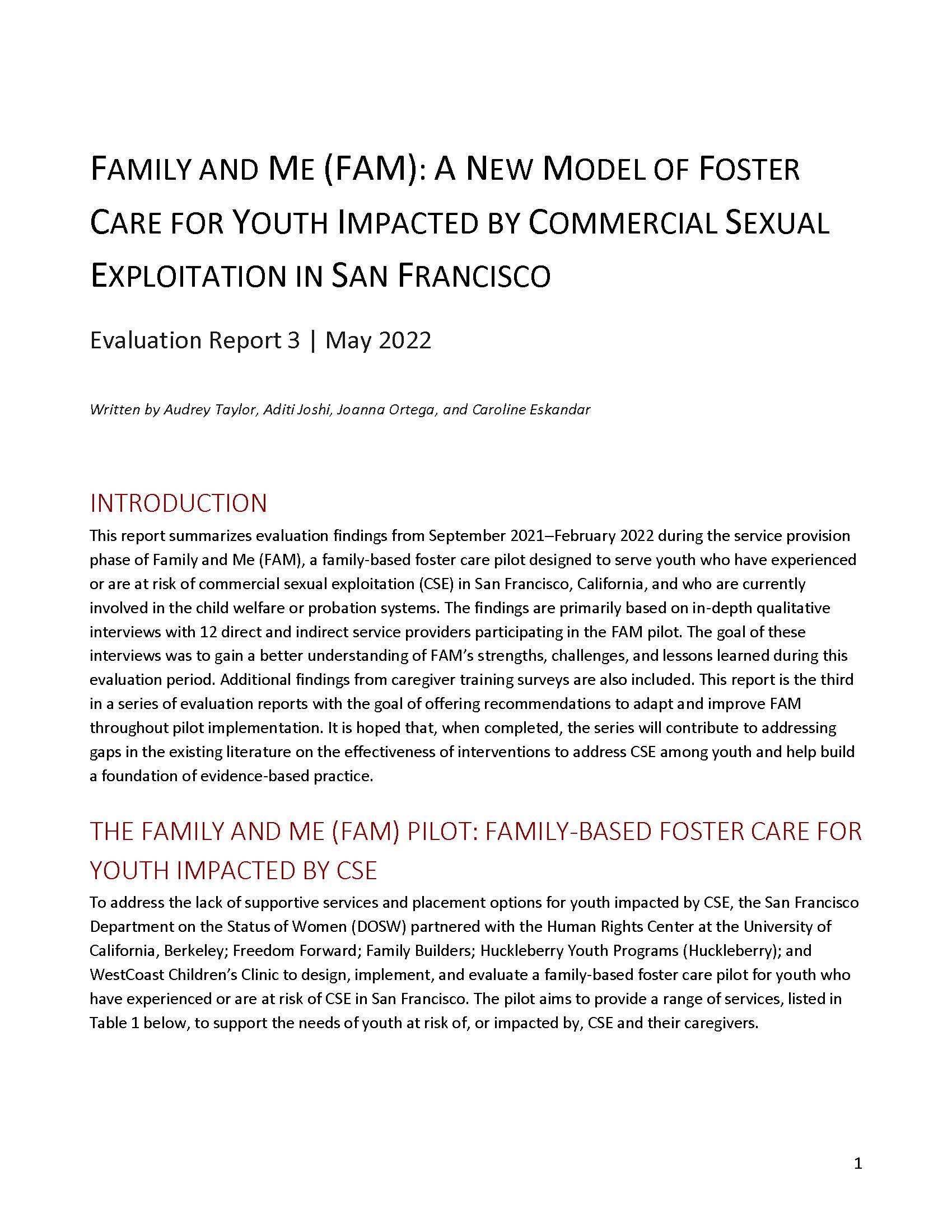Family and Me (FAM) A New Model of Foster Care for Youth Impacted by Commercial Sexual Exploitation in San Francisco
Download PDFSummary
Children and youth experiencing commercial sexual exploitation (CSE) often have some form of engagement with the child welfare system. Safe and stable housing is vital to minimize vulnerability to CSE, help survivors recover, and reduce revictimization. Yet housing and shelter are among the top service gaps reported by agencies serving trafficking survivors in San Francisco, a high density area for CSE. To address this disparity, a coalition of agencies developed Family And Me (FAM) in 2019, a new model of foster care designed to meet the needs of youth who have experienced or are at risk of CSE in the San Francisco Bay Area. The goal was to establish an evidence-based, youth-centered model of care that could be scaled throughout the State of California and beyond. The 3.5-year FAM pilot aimed to improve the health, safety, and well-being of youth affected by CSE and to increase the knowledge, capacity, and retention rates of the caregivers who support them by offering a range of enhanced support services for both youth and their caregivers. However, due to numerous challenges, such as COVID-19 restrictions and recruitment barriers, the FAM collaborative was only able to implement a portion of the original FAM model. The Human Rights Center partnered with the FAM Collaborative to conduct an in-depth evaluation of the pilot. The FAM evaluation was designed as a quasi-experimental, longitudinal, mixed-methods study with regular cycles of data collection and analysis which partners used to adapt and improve the FAM pilot over time. Due to the challenges in pilot implementation, the evaluation focus shifted to an in-depth, process-oriented assessment identifying implementation successes, challenges, and lessons learned in three programmatic areas: youth identification and engagement, caregiver recruitment and training, and collaboration, coordination, and referral among service providers. Four rounds of data collection were undertaken between 2019 and 2022; data were thematically analyzed.






